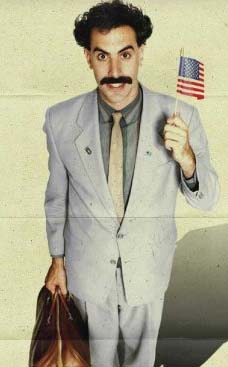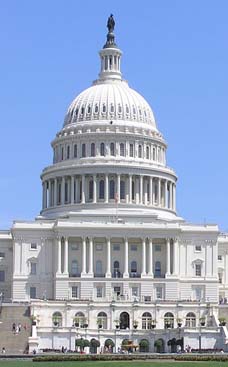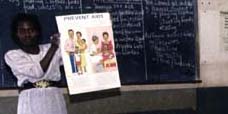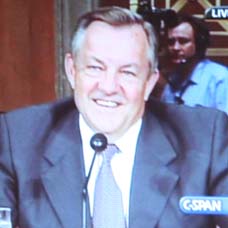2006.11.16: November 16, 2006: Headlines: COS - India: Country Directors - India: Mountain Climbing: Staff: BurlingtonFreePress.com: A one-time mountaineer, Charles Houston built his medical career around his interest in and love for hiking
Peace Corps Online:
Peace Corps News:
Peace Corps Library:
Mountaineeering, Mountain Climbing:
March 10, 2005: Headlines: COS - India: Country Directors - India: Mountain Climbing: Middlebury Campus: India Country Director Charles Houston to be awarded honorary degree at Middlebury College :
December 3, 2004: Headlines: COS - India: Country Directors - India: Mountain Climbing: PBS: Charles Houston, Mountaineer and Physician :
2006.11.16: November 16, 2006: Headlines: COS - India: Country Directors - India: Mountain Climbing: Staff: BurlingtonFreePress.com: A one-time mountaineer, Charles Houston built his medical career around his interest in and love for hiking
A one-time mountaineer, Charles Houston built his medical career around his interest in and love for hiking

Houston is sometimes called the "father of high-altitude medicine," said Dr. David Kaminsky, associate professor of medicine at UVM College of Medicine and co-director of the Vermont Lung Center. "The thing that Charlie has been great about is realizing the bigger picture: The way the body is responding to low oxygen is sort of an innate process," Kaminsky said. "... We can apply a lot of the principles from high-altitude patients to the way we understand and take care of patients at low-altitude." Houston, a former director of the Peace Corps in India, moved to Burlington 40 years ago to join the medical school, where he was chairman of the department of community medicine. He has been ahead of the pack in numerous endeavors, including his work to develop a mechanical heart and his call for (and shaping of) a universal health plan in Vermont.
A one-time mountaineer, Charles Houston built his medical career around his interest in and love for hiking
Ramblings: Vermonter reached medical mountaintop
Published: Thursday, November 16, 2006
By Sally Pollak
Free Press Staff Writer
About the column: Ramblings is a weekly conversation with people in which we explore the places, ideas and events that help shape the state where we live.
It was "just a picnic," said Charles Houston, of the 10 days he and his father spent hiking on Mount Everest. The year was 1950, and Houston and his father, Oscar Houston, walked in Nepal on the mountain's south side.
They were the first Westerners (with British mountaineer Bill Tilman) to explore this piece of the mountain. Permission for the trek was arranged by Houston's father, a lawyer who loved to hike. Oscar Houston invited his son to join him.
"It was his party," Houston recalled the other day at his home in the South End. "It was very exciting. Everything was fresh and unspoiled, and the Nepalese were so delighted to see us and so hospitable.
"I don't think we had any idea of how this would become a playground. We were just walking. It was just a picnic."
Houston, 93, is a retired Burlington physician and professor emeritus at the University of Vermont College of Medicine. A one-time mountaineer, Houston built his medical career around his interest in and love for hiking.
Houston is an expert in high-altitude medicine who, over the course of decades, designed and conducted experiments concerning the effects of high altitude (and thus diminished oxygen) on bodily functions.
The results of Houston's ground-breaking research turned out to apply not only to people at high altitudes, but to people at sea level who have lung and other diseases that are aggravated by hypoxia, or oxygen deprivation.
"You never how these things are going to work out," Houston said. "I tell medical students that you will never really know until you go look. You have to be venturesome. You have to dare to fail -- and just go for it."
Houston is sometimes called the "father of high-altitude medicine," said Dr. David Kaminsky, associate professor of medicine at UVM College of Medicine and co-director of the Vermont Lung Center.
"The thing that Charlie has been great about is realizing the bigger picture: The way the body is responding to low oxygen is sort of an innate process," Kaminsky said. "... We can apply a lot of the principles from high-altitude patients to the way we understand and take care of patients at low-altitude."
Houston, a former director of the Peace Corps in India, moved to Burlington 40 years ago to join the medical school, where he was chairman of the department of community medicine. He has been ahead of the pack in numerous endeavors, including his work to develop a mechanical heart and his call for (and shaping of) a universal health plan in Vermont.
As a mountaineer, he also ventured to places that later would draw crowds. In 1935, his first year of medical school at Columbia, Houston asked the dean if he could skip the last six week of classes to hike in the Himalayas. The dean said yes, though Houston isn't sure why. "And off I went and we had a very successful trip," Houston said.
In his second year of medical school, Houston repeated his request. "I don't know if that's a good idea, but it may be important in your life," Houston recalled the dean telling him. "He was right: It was not only important in my life, it changed my life."
The climb was to the summit of Nanda Devi, a 25,645-foot mountain in India. At the time, it was the highest mountain ever climbed -- a record that would stand until a 1950 ascent of Annapurna.
Houston was part of two expeditions that attempted to summit K2, the world's second highest mountain.
The 1938 trip, whose climbers reached 26,000 feet, would produce a map to the top that was used 16 years later by the first team to summit the mountain.
Houston's 1953 expedition involved his high-altitude diagnosis, and the team's phenomenal rescue attempt, of one of the climbers, a story Houston tells in his book, "K2: The Savage Mountain." It would be his last climb.
Houston's firsts extend to his work as a physician.
Though high-altitude illness was described in Chinese medical literature as early as 30 B.C., Houston is the first American doctor to recognize high-altitude pulmonary edema and write about it in English, Kaminsky said. His article was published in the New England Journal of Medicine in September 1960.
"A cross-country skier came out of the mountains in Aspen, and Charlie was smart enough to recognize what it was," Kaminsky said. "He was very, very observant."
Houston talks about the "early risk-takers" in medical science who had the courage, the "moral courage," to conduct research and seek knowledge, to experiment and think innovatively and creatively.
He wonders if certain of his studies, including one he called OE II, for Operation Everest II, might be considered unethical today because of the use of human subjects.
The six-week study in Natick, Mass., conducted 21 years ago, was a continuation of Houston's long-term, high-altitude studies in the Yukon. It also referred to his 1947 study, Operation Everest, in which sailors in a decompression chamber were exposed to increasing altitudes, day by day, to see if they could survive on Everest.
"It was a seminal event," Houston said. "A brand-new idea."
In Natick, Houston and his colleagues performed extensive analyses of eight men who lived in a decompression chamber, with the subjects rising the equivalent of 1,000 feet a day in their controlled environment.
Houston studied and recorded detailed information on the physiological and biological effects of being at 23,000 to25,000 feet, and higher.
"The only things I really got involved with were things that hadn't been done before," Houston said.
In 1953, more than a decade before he moved to Vermont, Houston quit climbing. He's never hiked up Camels Hump or Mount Mansfield. He has no interest in the big mountains of Asia. They're too crowded. Mount Everest has become "a trophy."
Contact Sally Pollak at spollak@bfp.burlingtonfreepress.com or 660-1859.
Links to Related Topics (Tags):
Headlines: November, 2006; Peace Corps India; Directory of India RPCVs; Messages and Announcements for India RPCVs; Country Directors - India; Mountain Climbing; Staff; Vermont
When this story was posted in January 2007, this was on the front page of PCOL:





Peace Corps Online The Independent News Forum serving Returned Peace Corps Volunteers
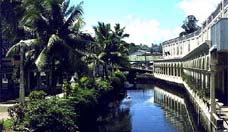 | All Volunteers Safe in Fiji
All Volunteers in Fiji are safe and accounted for. The Peace Corps is monitoring the situation very closely. Volunteers are on standfast but there are no plans for evacuation at this time. Peace Corps is working closely with the US embassy and with host country partners to monitor the situation. Peace Corps is confident that volunteers are not in harm's way. The military seized control of Fiji on December 5 after weeks of threats. Subscribe to our news feed to read the latest breaking news. |
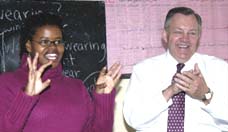 | Ron Tschetter in Morocco and Jordan
On his first official trip since being confirmed as Peace Corps Director, Ron Tschetter (shown at left with PCV Tia Tucker) is on a ten day trip to Morocco and Jordan. Traveling with his wife (Both are RPCVs.), Tschetter met with volunteers in Morocco working in environment, youth development, health, and small business development. He began his trip to Jordan by meeting with His Majesty King Abdullah II and Her Majesty Queen Rania Al Abdullah and discussed expanding the program there in the near future. |
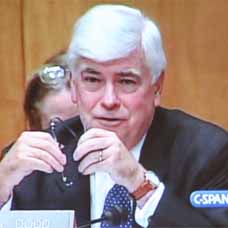 | Chris Dodd's Vision for the Peace Corps
Senator Chris Dodd (RPCV Dominican Republic) spoke at the ceremony for this year's Shriver Award and elaborated on issues he raised at Ron Tschetter's hearings. Dodd plans to introduce legislation that may include: setting aside a portion of Peace Corps' budget as seed money for demonstration projects and third goal activities (after adjusting the annual budget upward to accommodate the added expense), more volunteer input into Peace Corps operations, removing medical, healthcare and tax impediments that discourage older volunteers, providing more transparency in the medical screening and appeals process, a more comprehensive health safety net for recently-returned volunteers, and authorizing volunteers to accept, under certain circumstances, private donations to support their development projects. He plans to circulate draft legislation for review to members of the Peace Corps community and welcomes RPCV comments. |
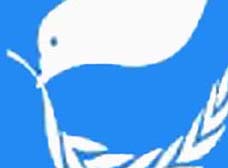 | He served with honor
One year ago, Staff Sgt. Robert J. Paul (RPCV Kenya) carried on an ongoing dialog on this website on the military and the peace corps and his role as a member of a Civil Affairs Team in Iraq and Afghanistan. We have just received a report that Sargeant Paul has been killed by a car bomb in Kabul. Words cannot express our feeling of loss for this tremendous injury to the entire RPCV community. Most of us didn't know him personally but we knew him from his words. Our thoughts go out to his family and friends. He was one of ours and he served with honor. |
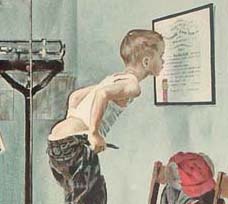 | Peace Corps' Screening and Medical Clearance
The purpose of Peace Corps' screening and medical clearance process is to ensure safe accommodation for applicants and minimize undue risk exposure for volunteers to allow PCVS to complete their service without compromising their entry health status. To further these goals, PCOL has obtained a copy of the Peace Corps Screening Guidelines Manual through the Freedom of Information Act (FOIA) and has posted it in the "Peace Corps Library." Applicants and Medical Professionals (especially those who have already served as volunteers) are urged to review the guidelines and leave their comments and suggestions. Then read the story of one RPCV's journey through medical screening and his suggestions for changes to the process. |
 | The Peace Corps is "fashionable" again
The LA Times says that "the Peace Corps is booming again and "It's hard to know exactly what's behind the resurgence." PCOL Comment: Since the founding of the Peace Corps 45 years ago, Americans have answered Kennedy's call: "Ask not what your country can do for you--ask what you can do for your country. My fellow citizens of the world: ask not what America will do for you, but what together we can do for the freedom of man." Over 182,000 have served. Another 200,000 have applied and been unable to serve because of lack of Congressional funding. The Peace Corps has never gone out of fashion. It's Congress that hasn't been keeping pace. |
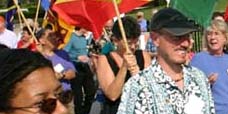 | PCOL readership increases 100%
Monthly readership on "Peace Corps Online" has increased in the past twelve months to 350,000 visitors - over eleven thousand every day - a 100% increase since this time last year. Thanks again, RPCVs and Friends of the Peace Corps, for making PCOL your source of information for the Peace Corps community. And thanks for supporting the Peace Corps Library and History of the Peace Corps. Stay tuned, the best is yet to come. |
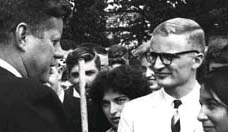 | History of the Peace Corps
PCOL is proud to announce that Phase One of the "History of the Peace Corps" is now available online. This installment includes over 5,000 pages of primary source documents from the archives of the Peace Corps including every issue of "Peace Corps News," "Peace Corps Times," "Peace Corps Volunteer," "Action Update," and every annual report of the Peace Corps to Congress since 1961. "Ask Not" is an ongoing project. Read how you can help. |
Read the stories and leave your comments.

Some postings on Peace Corps Online are provided to the individual members of this group without permission of the copyright owner for the non-profit purposes of criticism, comment, education, scholarship, and research under the "Fair Use" provisions of U.S. Government copyright laws and they may not be distributed further without permission of the copyright owner. Peace Corps Online does not vouch for the accuracy of the content of the postings, which is the sole responsibility of the copyright holder.
Story Source: BurlingtonFreePress.com
This story has been posted in the following forums: : Headlines; COS - India; Country Directors - India; Mountain Climbing; Staff
PCOL35179
43







